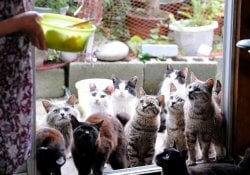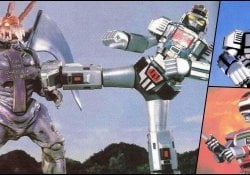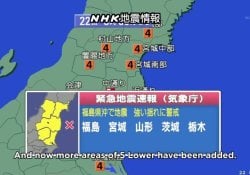Like any language, Japanese has punctuation and special characters called yakumono (約物). These punctuations include several marks, exclamation, question mark, commas and some special characters that do not exist in English. In this article, we will briefly know some punctuation and special characters and how to use them.
In this article we are not going to talk about dakuten, because there is already a specific article about it, and it falls more into the category of accentuation. We have also written an article talking about the space in the Japanese language.
It is worth remembering that on the keyboard, these punctuations are usually spaced, and it is unnecessary to include a space after it to start writing. Punctuation began to be used in Japanese around the 19th century, being influenced by European languages.
Índice de Conteúdo
Japanese language punctuation
Comma - toten - 読点 - The comma in the Japanese language is inverted being (、) instead of (,). It is often used in many contexts to mark separate elements within a sentence.
Ellipsis - riidaa - リーダー - The famous three dots (...) in the Japanese language are called ellipses or dotted line. It indicates an intentional omission or abbreviation, a pause in speech or an unfinished thought. You rarely find other variations written with just 2 dots or more than 3 dots with a similar meaning.
Point - kuten - 句点 - The period at the end of Japanese sentences is typically larger and has a hole in the middle (。). Unlike the Western period, it is often used to separate consecutive clauses instead of ending each sentence. It is also often omitted if the sentence stands alone or if the text is terminated with quotation marks.
Exclamation mark - kantanfu - 感嘆符 - It is usually used after an interjection or exclamation to indicate strong feelings or loud volume, usually marks the end of a sentence.
Question Mark - Gimonfu - 疑問符 – In normal Japanese, no symbol is used to mark interrogative sentences, it is usually understood that it is a question only by the か. However, the question mark is often used in casual, creative or manga writing, especially in sentences that are questions but do not end with か.
Points and special characters
Colon - koron - コロン - In Japanese it is used to inform the reader that what follows proves, clarifies, explains or enumerates elements referred to above. (:).
Dash - Nakasen - 中線 -The Japanese dash (―) can be placed beside things to give explanatory emphasis, expressing something like "from... to...". It can also be used to add names and numbers in addresses like parte. Be careful not to confuse it with the dash used to extend the sound of katakana.
Partial toggle mark - The brand (〽) is often used to indicate that the passage is taken from a song, or that the person in the text is singing. Also known by the names of ioriten 庵点 or utakigou 歌記号.
Musical note - ♪ - As the name says, it is used to indicate lyrics of a song, or that someone is singing the phrase.
Repeat Signals
Some important signs are often used to replicate or repeat a Japanese character.
- Dounojiten (々・仝): Used to double a Kanji or composition;
- Ichinojiten (ヽ): Doubles previous Katakana;
- Katakanagaeshi (ヾ): Doubles previous Katakana plus dakuten;
- Hiraganagaeshi (ゝ): Doubles the previous Hiragana;
- Hiraganagaeshi (ゞ): Doubles the previous Hiragana plus dakuten;
Interposition point - nakaguro - 中黒
It can be literally translated as black center, it is represented by a black dot in the middle (・). It can be used for:
- Separating Japanese words where the intended meaning would not be clear if the characters were written side by side;
- Separate listed items instead of a comma;
- Separate foreign words and names written in katakana;
- Separate titles, names and positions;
- It has the function of a decimal point and a double hyphen;
- Used in place of hyphens, dashes and colons when written vertically;
Wave trace - Nami dasshu - 波ダッシュ
Similar to the tilde accent, the difference is that it is in the middle (〜). It is often used for:
- To indicate tracks, used in place of kara and made;
- To separate a title from a subtitle on the same line;
- To tag subtitles; To indicate origin フランス〜 (from France);
- To indicate a long or prolonged vowel with comic or beautiful effect;
- To indicate or suggest that music is playing;
Brackets and Quotation Marks - kakko - 括弧
In Japanese, there are several types of square brackets. They are used in pairs to separate or interpose text within text. In vertical writing these brackets are rotated 90º. See a list of brackets below:
- { } - namikakko (波括弧);
- ( ) - marukakko (丸括弧);
- [ ] - kakukakko (角括弧);
- 【 】 - sumitsukikakko (隅付き括弧);
Brackets or parentheses are also used to:
- Show readings and additional information;
- In mathematics or geometry;
- Show hidden information, close a mathematical range 【 】[ ];
- Delimit words or lines{ }.
In addition to the square brackets, there are the quotation marks that are represented by (「 」 and 『 』). It has the same function as quotation marks in the Portuguese language, with few different rules and changes. Double quotes (『 』) should be used when one quote is inside another.
There are several other dots and signs in the Japanese language, but in this article, we will end there.




